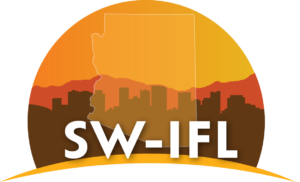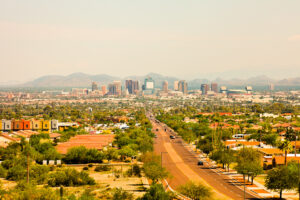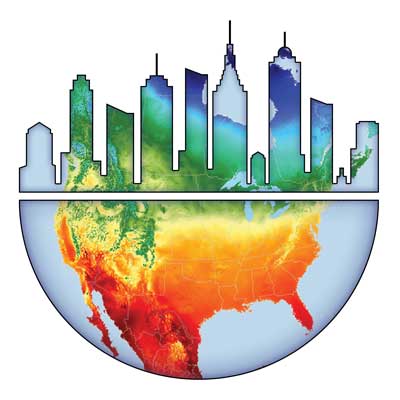Southwest Integrated Field Laboratory
 David Sailor, Arizona State University (Lead PI)
David Sailor, Arizona State University (Lead PI)
Participating Institutions:
- Brookhaven National Laboratory
- IBM
- Northern Arizona University
- Oak Ridge National Laboratory
- University of Arizona
The Southwest Integrated Field Laboratory project (SW-IFL) led by Arizona State University (ASU) will study the rapidly urbanizing “megaregion” that stretches across the state of Arizona from the Mexican border in the south to the Navajo (Diné) Nation in the north. This growing urban megaregion is experiencing stresses resulting from a warming climate and population growth. This region contains one of the fastest growing urban corridors in the U.S., including major cities of Tucson, Phoenix, and Flagstaff. With most of the region’s urban areas routinely experiencing 30+ days of temperatures above 110 °F each summer, the population is stressed by the complex interactions of extreme heat, atmospheric pollutants, and limited water. The SW-IFL will seek to provide scientists and decision makers with high-quality, relevant knowledge capable guiding responses to these environmental concerns.
The SW-IFL will develop and deploy novel observational and modeling capabilities that improve understanding of extreme heat as a central driver of key environmental outcomes, including greenhouse gas emissions, urban water stress, and fate and transport of urban air pollutants in the complex Arizona megaregion. Observations will leverage existing networks of weather, air quality, and hydrological measurements, supplementing available data with crucial new measurements of land-atmosphere exchange processes, atmospheric composition, and emissions. Intensive observational periods (IOP) throughout the summer months (from hot/arid pre-monsoon months throughout the peak of the North American monsoon season) will use mobile observatories to measure large-scale boundary-layer processes and focused neighborhood-scale heavily instrumented testbed experiments to elucidate drivers of microclimate variations and to evaluate the efficacy of proposed solutions.

Phoenix, Arizona. The Southwest UIFL represents one of the fastest growing urban corridors in the U.S., including major cities of Tucson, Phoenix, and Flagstaff.
The integration of new observations with innovations in coupled models across scales will enable high resolution modeling. Next-generation predictive modeling capabilities for urban regions will be developed by improving representations of fine-scale physical processes, while coupling existing state-of-the-art models that integrate human behavior and atmospheric phenomena ranging from neighborhood to regional and global scales. The results will assist decision-makers in analyzing and evaluating solutions that promote equitable and effective policy interventions across the region. The integration of high-resolution observations (atmospheric, land surface, and infrastructure), diagnostic and predictive models, and civic engagement will provide new knowledge and deliver next-generation predictive tools that are regionally specific but also translatable to other arid regions. Ultimately, the new tools will empower the public to respond to extreme heat, while informing the development and deployment of policies and solutions that are effective, equitable, and generalizable.
